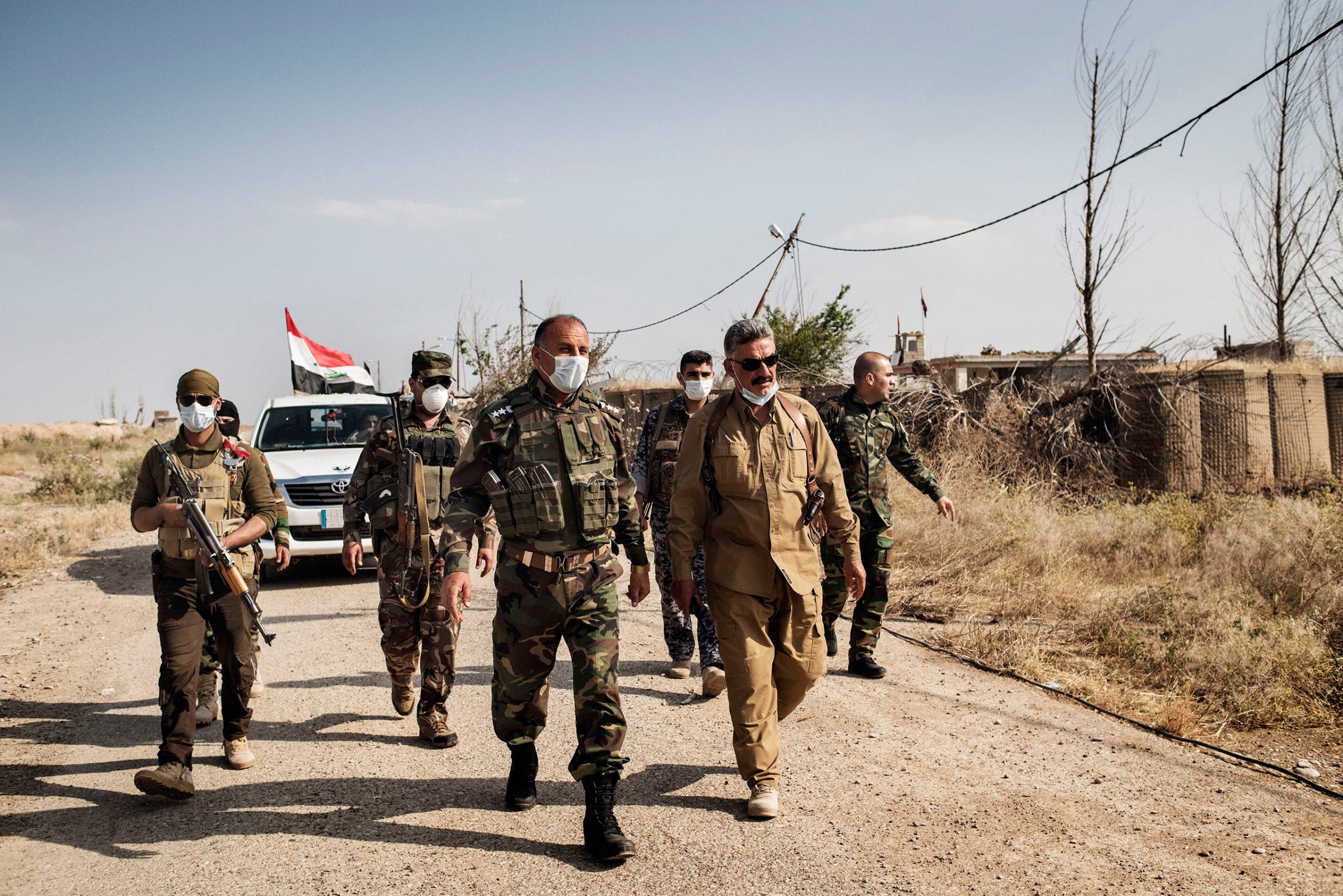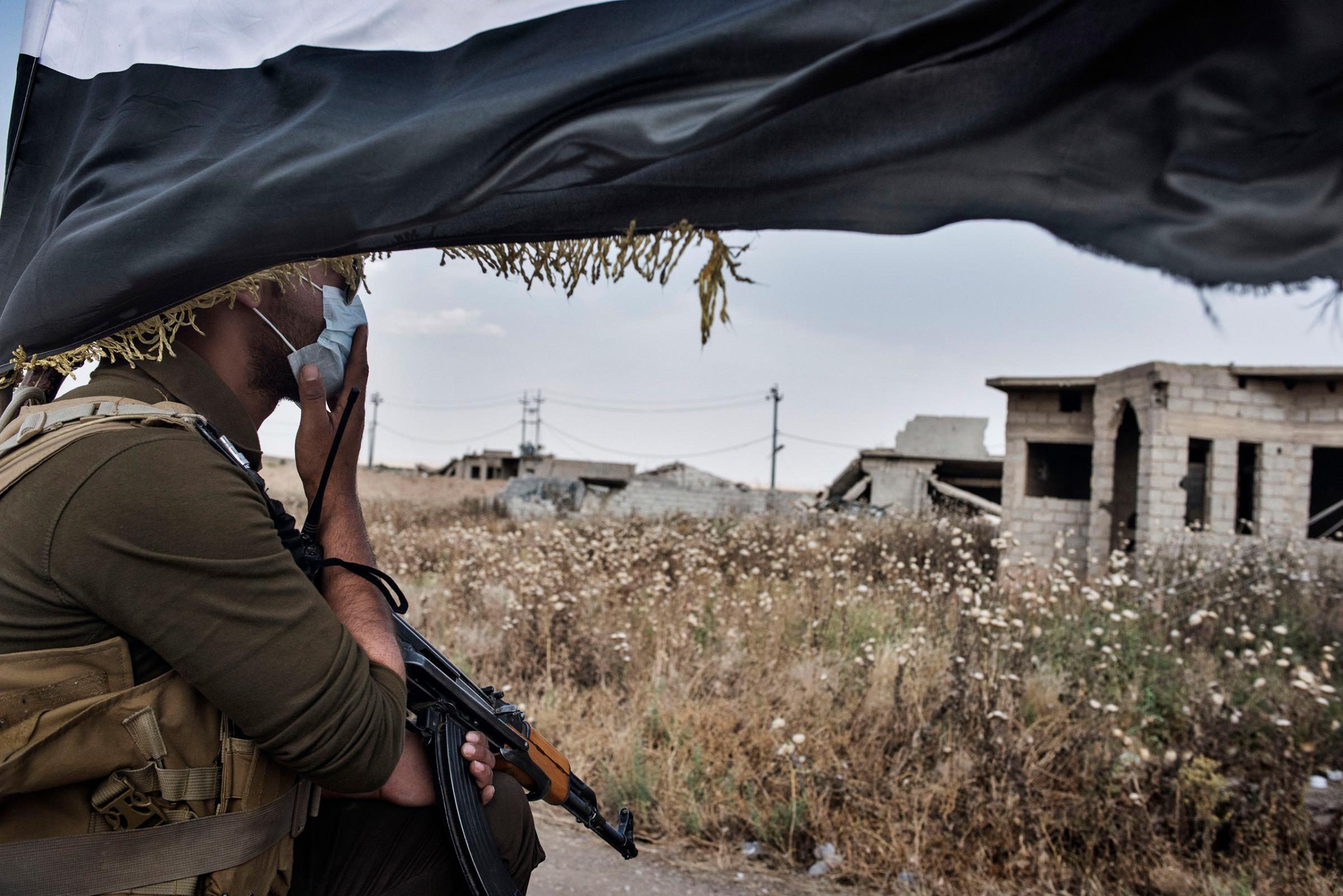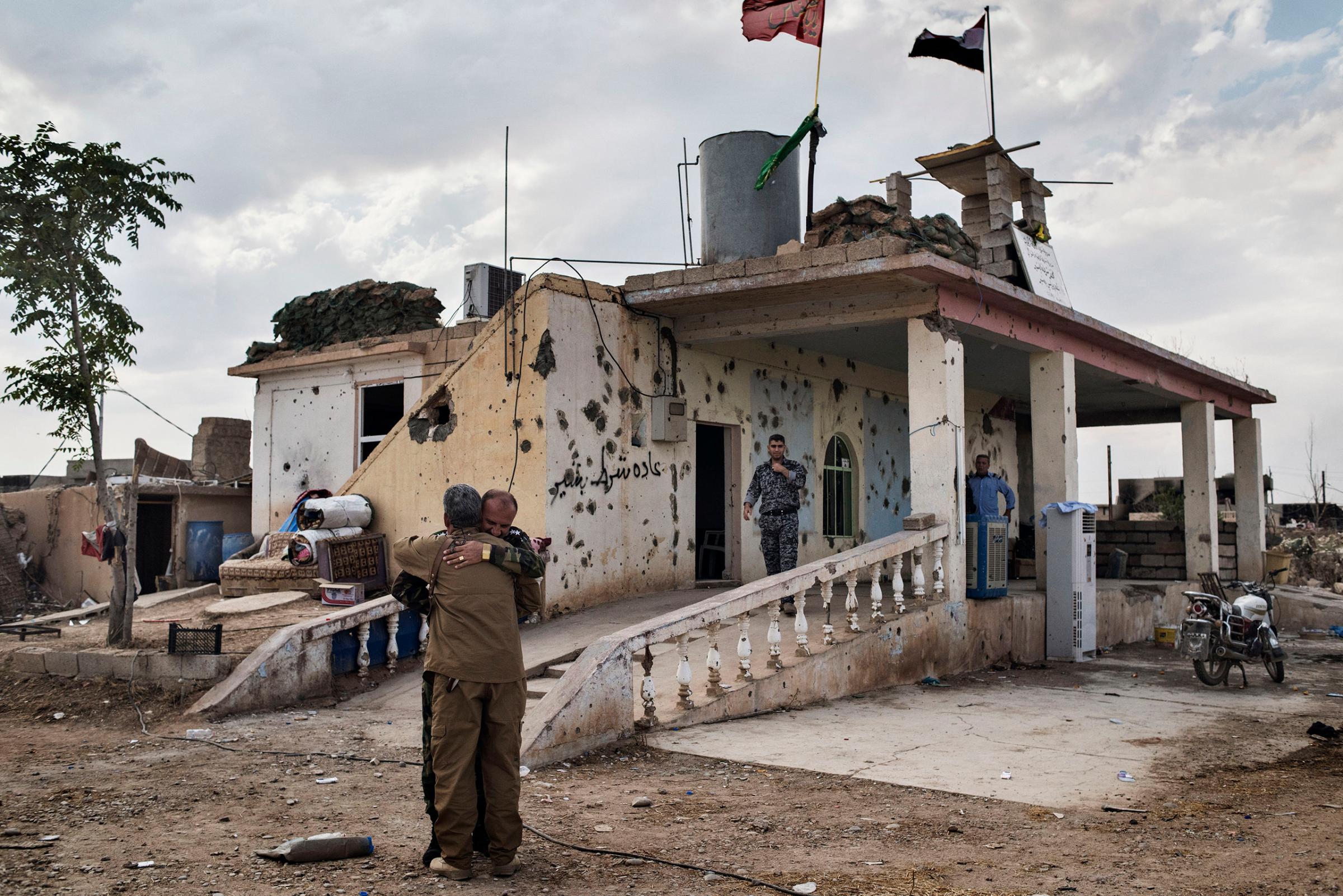
It was midmorning on Sunday May 8 when the rockets began to fall on the abandoned town. At first there was the thud of the shells, followed by black and white smoke and an acrid smell. The police officers deployed in the deserted town later said they began to feel pains in their chests and their airways close up. They called for urgent medical help, and were evacuated to a hospital in the next town.
In interviews two days after the shelling, two police officials who were on the scene during the attack and a physician who treated the victims said the rockets contained chemical weapons, possibly sulfur mustard (so-called mustard gas) or chlorine. A police report obtained by TIME says that rockets fired by Islamic State militants on May 8 landed in Bashir, just south of the city of Kirkuk, releasing toxic gasses. The report also lists the names of 46 people wounded in the attack.

The attack is the most recent in a series of alleged chemical attacks by ISIS in both Iraq and Syria. The assault also illustrates the immense difficulty ahead for Iraq’s rival armed forces as they attempt to reclaim and hold territory previously occupied by ISIS.
Backed by the United States armed forces, the Iraqi national army and rival Kurdish and Shiite armed groups are engaged in a slow and grinding war to reassert control over the vast chunks of Iraqi territory that fell to ISIS during the jihadists’ lighting advance across the country in 2014. Even though the jihadists are in retreat, they maintain the ability to stage brutal attacks on combatants and civilians alike.
Before it fell to ISIS, Bashir was a town of more than 5,000 people, mainly ethnic Turkmen. It was retaken in May by a loose coalition that included Kurdish fighters and local Turkmen militiamen. After multiple attempts to retake the town, fighters from the two groups pushed across a narrow bridge spanning a canal that had constituted the front line, and then swept into the town.
Today, Bashir is all but deserted. In the center of the town, a single black-uniformed police officer stands at his post in front of a basic shop, the metal doors painted purple. Across the street, an Iraqi flag is planted in a pile of rubble where a house had stood. Leaning on one side of the shop is a large green militia billboard displaying portraits of men killed in the battle for the town. The front line is less than two miles away and bursts of nearby explosions punctuate the stillness.

The suspected chemical attack came just days after the recapture of the town. Police commander Mahmoud Ali had been sitting in a bullet-riddled concrete building that serves as the police station in Bashir when the attack began, he tells TIME. Ali, a rugged man in his forties, had been dispatched from Kirkuk to oversee security in Bashir after the ISIS fighters had been expelled. The commander remembers counting 22 shells before he felt the effects of the gas.
“We smelled it, and then we became dizzy,” he says. “It smelled spicy. It smelled bad.” Some of his men began to vomit.
According to Ali, the majority of the rockets fell in a field near the police station. At least three shells landed in the immediate vicinity of the station. Three small craters remain, surrounded by ash. The police burned tires on top of the shells, thinking the smoke would limit the effects of the gas.
TIME was not able to observe shell debris but two days after the attack, a distinct, acrid odor could be detected in the air. Even to venture near the impact craters, the officers put on white surgical masks, a thin layer of protection from the possible remains of the chemicals.
ISIS staged an earlier chemical attack on the neighboring town of Taza on March 8. At least 600 people were wounded at the time, according to the Associated Press. According one doctor at the local hospital, at least 2,000 people were treated for exposure to the gas over the course of a month and a half.
“We began to treat them as an allergic condition. But when the cases became more and more, we got in our mind that there was something wrong. Because there is no allergic reaction that occurs suddenly with hundreds of cases,” said Dr. Naim Sabah Mohamed at the Primary Health Care Center in Taza. Another Taza resident provided photos that showed police officers in the hospital on the day of the attack, apparently breathing oxygen through masks strapped to their faces.
When the second attack took place in Bashir on May 8, Dr. Mohamed said he treated the patients, who numbered between 50 and 60 in total, for the same symptoms as the first attack: dizziness, shortness of breath, blurred vision, vomiting. Lab technicians informed him that the first attack included both mustard and chlorine, and he surmised that the same could be true of the second bombing. He and other officials in the area are concerned more will follow.
“This area is about 30,000 people. What can you do? Can you take all of them out of this area? It is very difficult. They have their agriculture, their animals, their shops,” he said.
Reports of chemical weapons attacks by ISIS have increased in recent months. In addition to the attacks in Iraq, Syrian state media also reported in April that ISIS used mustard gas on regime troops at an air base near the city of Deir el-Zour, which has been a theater of intense fighting between the two sides over the last several months.
The head of the Organisation for the Prohibition of Chemical Weapons, an international watchdog group, said last week that it has confirmed that sulfur mustard had been used by ISIS in both Iraq and Syria. “There are strong suspicions that the IS may have used the mustard gas,” said OPCW chief Ahmet Üzümcü in an interview with a Slovenian news agency.
First used as a weapon in the first World War, mustard gas is one of a range of lethal chemical weapons outlawed by the Geneva Conventions and other international treaties. OPCW officials say ISIS may be producing sulfur mustard of its own, as it is unlikely the group obtained the chemical from government stockpiles. “These weapons are lower quality, but still lethal and should be of the highest concern,” said OPCW spokesperson Deepti Choubey in a phone interview.
In Iraq, the use of the gas raises traumatic memories of past chemical weapons attacks under the regime of Saddam Hussein. The regime deployed sulfur mustard against Iranian troops during the long war between Iraq and Iran and also against its own Kurdish population, killing thousands.
ISIS has also reportedly used chemical weapons against Syrian rebels and Kurdish forces currently fighting in northern Iraq. Laboratory tests confirmed at least one case in which the jihadists deployed mustard gas against Kurdish troops, according to Reuters.

In March U.S. officials said special forces had captured an alleged chief engineer of ISIS’ chemical weapons program. The officials told the Guardian that Sleiman Daoud al-Afari had been a member of the military under Saddam Hussein and had joined ISIS early in the organization’s existence.
Col. Steve Warren, the spokesman in Baghdad for the U.S.-led military coalition against ISIS said in an email, “We’ve had reports of the chemical strike you describe but we have not confirmed with testing. They have conducted such strikes in the past and we believe they will continue to conduct them. This is why we have struck their chemical weapons facilities and captured their chemical weapons emir.”
The ongoing attacks show that even once territory is reclaimed in Iraq, then another even more complex set of problems begin for the forces on the ground. The triple car bombing in Baghdad on May 11 was yet another instance of the group’s strategy of inflicting horror on civilian populations, even as it loses ground on the battlefield.
More Must-Reads from TIME
- Cybersecurity Experts Are Sounding the Alarm on DOGE
- Meet the 2025 Women of the Year
- The Harsh Truth About Disability Inclusion
- Why Do More Young Adults Have Cancer?
- Colman Domingo Leads With Radical Love
- How to Get Better at Doing Things Alone
- Michelle Zauner Stares Down the Darkness
Contact us at letters@time.com